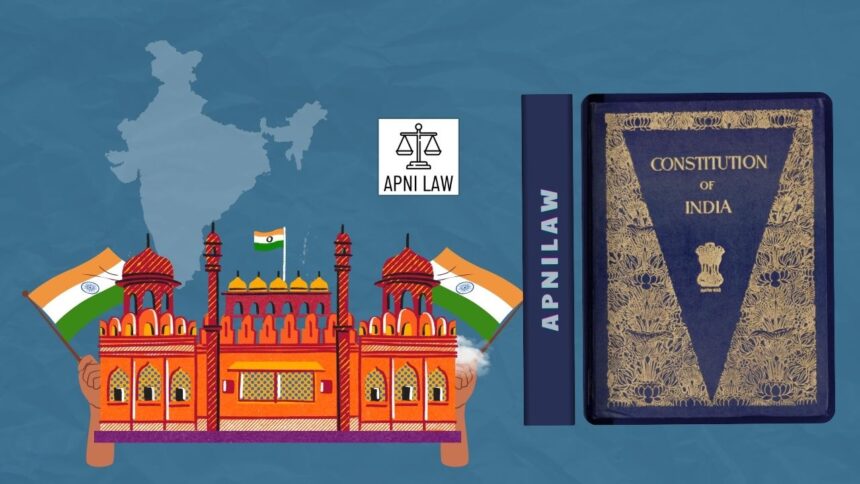Introduction
The Kesavananda Bharati Case of 1973 is one that is best remembered as the judgment which salvaged Indian democracy. What began as a case involving property rights in Kerala went on to define the very bedrock of the Indian Constitution. The case compelled the Supreme Court to respond to one of the most important questions in constitutional history: does Parliament possess infinite power to amend the Constitution, or are there boundaries which must always be left unscathed?
The Court’s response forever altered the trajectory of Indian constitutional law. It established the basic structure doctrine, a test which continues to dictate just how far Parliament can reach when enacting amendments. Perhaps more importantly, the Court declared the Preamble a fundamental component of the Constitution. No longer mere window dressing, the Preamble became a beacon that safeguards India’s democratic principles.
Background of the Case
The saga started when Kesavananda Bharati, the chief of a religious organization in Kerala, contested state land reform legislation that restricted his rights over property. He went to the Supreme Court under Article 26, which provides the freedom to administer religious affairs. But soon, the case extended beyond his own rights. It became the issue of whether Parliament had the authority to change any component of the Constitution, including Fundamental Rights.
This debate had already seen twists in earlier cases. In Shankari Prasad (1951) and Sajjan Singh (1965), the Court had ruled that Parliament’s amending power was unlimited, even over Fundamental Rights. But in Golaknath (1967), the Court took the opposite view and said Parliament could not amend Fundamental Rights at all. This confusion created uncertainty, and Kesavananda Bharati’s petition became the stage for a final resolution.
Issues Before the Court
The questions before the 13-judge bench, the biggest ever in Indian judicial history, were deep ones. Could Parliament re-write the Constitution as it pleased? Were there values so basic that they were beyond the reach of Parliament? And the Preamble, was it merely an introduction, or did it constitute part of the Constitution?
These were not questions of legal interpretation. They were questions regarding the survival of democracy in India. If the power of Parliament was absolute, a majority government could remake the whole Constitution, even transform India into a dictatorship. The Court had to balance between the requirement of flexibility and safeguarding of fundamentals.
The Supreme Court’s Landmark Judgment
On 24 April 1973, the Supreme Court gave its judgment in a 7–6 majority. It was one of the most narrowest decisions made in Indian legal history. The Court held that Parliament enjoys extensive powers to modify the Constitution but that the powers are not absolute. It cannot make changes to or obliterate the fundamental structure of the Constitution.
Just as significant, the Court ruled that the Preamble forms a part of the Constitution. Not symbolic at all, the Preamble has actual constitutional significance. Judges could invoke it to interpret provisions and discern the meaning behind them. But just like the rest of the Constitution, the Preamble can be changed pursuant to Article 368, but only so long as the amendment doesn’t harm the basic structure.
The Preamble and Basic Structure Doctrine
This ruling bestowed honor on the Preamble in constitutional law. The Court established that the principles enunciated in the Preamble sovereignty, socialism, secularism, democracy, and republic are not mere words. They constitute the core of the Constitution’s fundamental structure.
This reading gained particular significance with the Emergency (1975–77), when Parliament attempted to enhance its powers. The 42nd Constitutional Amendment in 1976 inserted the words Socialist, Secular, and Integrity into the Preamble. Since these insertions did not obliterate the fundamental structure, they were held to be valid. This indicated that the Preamble could be modified but only within narrow parameters.
Why the Case Was a Turning Point
The Kesavananda Bharati decision altered India’s perception of constitutional authority. Previously, Parliament’s power was unbound. Subsequently, the Court imposed genuine and abiding limits on it. Regardless of the size of Parliament’s majority, it cannot do away with the principles of justice, liberty, equality, and fraternity.
By including the Preamble in the Constitution, the Court also provided future judges with an explicit tool of interpretation. Whenever there is uncertainty regarding a law or an amendment, the Preamble can be used to assist with interpretation by recalling everyone to the spirit of the Constitution.
Criticism of the Judgment
Though significant, the judgment was also not without criticism. Most said that the Court had overstepped by curbing Parliament’s authority. It should not be possible for unelected judges to prevent elected members of Parliament from amending the Constitution, they felt. The slim 7–6 margin also indicated how sharply divided the bench was on this matter.
However, history also proves that the doctrine of basic structure was necessary to safeguard Indian democracy. The doctrine was later invoked in numerous other instances, including Indira Gandhi v. Raj Narain (1975) and Minerva Mills (1980). Every time, the Court employed it to prevent moves to destabilize democracy.
Legacy of the Case
The Kesavananda Bharati Case left a legacy behind that still holds today. It made the Constitution elastic and stiff. Parliament may modify it to suit new needs, but it cannot kill its soul. The finding of the Preamble to be a part of the Constitution guaranteed that ideals such as justice, liberty, equality, and fraternity are never lost.
Even sixty years after the event, this case is often quoted in courts, classrooms, and public forums. It is a reminder that the Constitution is not merely a legal document but a living document that upholds India’s democratic ethos.
For any specific query call at +91 – 8569843472
Conclusion
The Kesavananda Bharati Case of 1973 is not merely a judgment, it is the foundation of India’s constitutional identity. By stating the Preamble to be a part of the Constitution and establishing the basic structure doctrine, the Supreme Court painted a line which even Parliament cannot breach.
The verdict transformed the Preamble into a constitutional compass, pointing lawmakers, judges, and citizens towards democracy, liberty, and equality. It guarantees that though governments may change, the fundamental principles of the Indian Constitution will remain unscathed.
The case reaffirmed one eternal truth, the Constitution does not belong to Parliament but to the Indian people, and its spirit has to last for generations to come.







